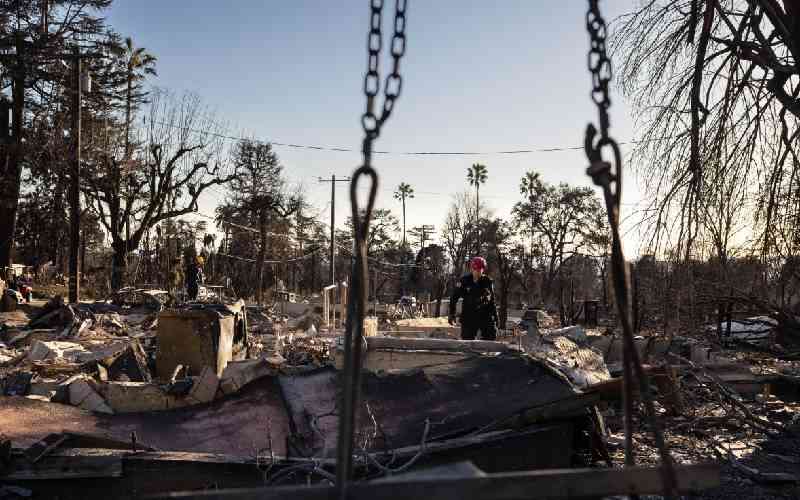Dr. Peter Baaro Gathura is a Senior Lecturer- the University of Nairobi, leading expert in environmental impact assessment, department of Public health, Pharmacology and toxicology who specializes in zoonotic diseases. We sat down with him today, and here is what Dr. Peter B Gathura had to say about the importance of meat inspection.
1. Why is it necessary to inspect meat?
We inspect meat for two main reasons;
(i) Aesthetic reasons: We want the meat to be presentable to the buyer. It is processed to ensure that it is clean and free from any unwanted matter.
(ii) Public health reasons: To prevent humans from Zoonotic diseases. These are diseases transmitted from animals to man and vice versa.
2. What are some diseases that can be transferred from animals to man?
The likes of Anthrax, brucellosis, common pork tapeworm, common beef tapeworm, and many others. That is why meat inspection is very vital.
3. Maybe take us through the process of meat inspection?
This is what happens, if for instance, I want to bring animals to Dagorretti from a Farm in Kajiado for slaughter, I first have to obtain the no objection permit from the Veterinary officer in charge of the slaughterhouse in Kajiado. The officer is supposed to examine the animals before she/he clears me with a movement permit. At the receiving point in Dagoretti, the meat inspector there should be issued with the movement permit to confirm whether the details in the permit correspond with the number of animals and the likes. The animals will then be allowed into the slaughterhouse, and another inspection would be done to look out for diseases like rabies that can only be easily detected when the animal is alive Versus when it is dead. Thereafter, the animals are taken into the slaughterhouse where they are slaughtered. A final inspection is carried out to look for any Zoonotic disease. It is normally quite thorough.
4. Are there any precautions taken during slaughtering?
Yes, absolutely. We ensure that the animal is slaughtered under hygienic conditions, the carcass is properly washed, then placed into a clean carrier for transportation.
5. Which government body is responsible for this?
This is all under the Ministry of Agriculture livestock and fisheries. The meat inspectors are, however, employees of the respective county governments.
6. What qualifies one to be a meat inspector to ensure authenticity?
One has to either be a qualified veterinarian who is gazetted as a meat inspector, or somebody with an animal health certificate and has trained at the meat training center in Athi river where they get issued with a certificate of Meat inspection. But the most important thing is that they must be gazetted; their name must appear in the Kenya gazette as a meat inspector.
Stay informed. Subscribe to our newsletter
7. With corruption at a rampant, how do you ensure honesty from anyone involved with meat inspection?
That is why there is meat stamping after inspection. These stamps have an establishment number, which shows the slaughterhouse where the carcass came from. It will be easy to trace anything or anyone when you go back to the records in case of anything.
8. What is the role of the Kenya Meat Commission in all this?
KMC is a government organization that is charged with the slaughter and the sale of meat. The main aim was to intervene and stabilize prices.
9. Any parting shot words?
Sure, a food animal is any animal that has been gazetted by the authority at that time in the Meat Control Act. Not all animals are food animals, and it is a crime to kill and sell any animal that is not under this category. We should definitely be very careful.
We have had countless cases of deaths as a result of ingesting poisonous meat over the years. This is simply because someone somewhere absconded their duty and put Citizen's lives in danger. This article, however, is meant to highlight the importance of meat inspection in the hopes of preventing future fatalities.
 The Standard Group Plc is a
multi-media organization with investments in media platforms spanning newspaper
print operations, television, radio broadcasting, digital and online services. The
Standard Group is recognized as a leading multi-media house in Kenya with a key
influence in matters of national and international interest.
The Standard Group Plc is a
multi-media organization with investments in media platforms spanning newspaper
print operations, television, radio broadcasting, digital and online services. The
Standard Group is recognized as a leading multi-media house in Kenya with a key
influence in matters of national and international interest.
 The Standard Group Plc is a
multi-media organization with investments in media platforms spanning newspaper
print operations, television, radio broadcasting, digital and online services. The
Standard Group is recognized as a leading multi-media house in Kenya with a key
influence in matters of national and international interest.
The Standard Group Plc is a
multi-media organization with investments in media platforms spanning newspaper
print operations, television, radio broadcasting, digital and online services. The
Standard Group is recognized as a leading multi-media house in Kenya with a key
influence in matters of national and international interest.








